The Article
Russ Andrews: The Ethos
24th January 2016
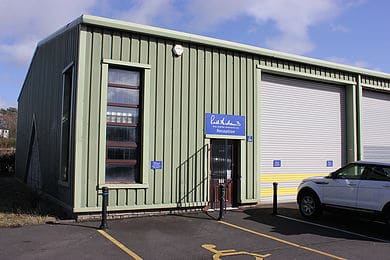
When you stand on the tight knit industrial estate, situated in Kendal within the beautiful Lake District countryside, your eye is drawn to the massive distribution centre owned by the kitchenware people, Lakeland. Turn 180 degrees and you see an initially unassuming building, owned by Russ Andrews.
The outside says a lot about the company inside. It has a homely, understated appearance that gives the impression of calm and self-control. The company sign is relatively small which breeds confidence: it doesn’t have to shout to prove that it exists. The logo itself is, famously, Andrews’ own signature, lending a personal touch that offers to connect to you directly. Standing outside, taking external photograph shots, I was struck by the silence. Signs of activity were nil. All was quiet.
Stepping inside, the activity is ramped up but not by much. Don’t get me wrong, everyone is busy, there’s plenty going and no-one is twiddling thumbs but the air of calm remains. It’s almost like the first day of a Cricket test match at Lords in there. There’s a low yet busy hum of activity.
After a quick chat with the staff I sat in the company’s listening room to chat with the man himself, Russ Andrews. Andrews is a restless character. You can see his mind constantly ticking over, even as he took me back to his early days, 1969 in Edinburgh where he would meet his future wife, Sue, “I asked her to marry me. She said, ‘Yes, but not until you’re working at something that you enjoy.’”
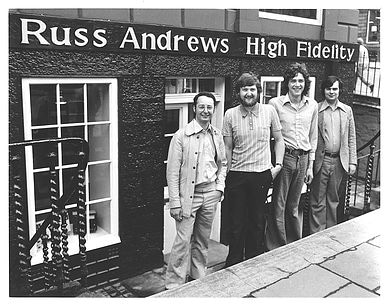
Now, speaking as a married man myself, this strikes me as an unusual reply to a proposal of marriage but one that is, if you think it through, eminently sensible. After all, the simplistic equation should go something like this: Russ Andrews + job satisfaction = a greater chance of a happy marriage. Andrews took it seriously. Especially as he was working for GEC Communications as a telecoms engineer, at the time.
“GEC was handling a digital amplifier for telephone lines, a relay amplifier plus modems. Modems are little things now but then they were enormous. The GEC example included eight different circuit panels in a large container. After it was made, it had to be extensively tested so I did fault finding on the ones that didn’t work. We even had specialist solderers to help repair the things. We also had to be sample tested by a Post Office engineer. A spot check for so many panels in a batch. If there was a fault found, the balloon went up. Mayhem. You didn’t want to go there. Everything had to be tested and double tested. It was fairly pressured work. It was well paid but mostly boring.”
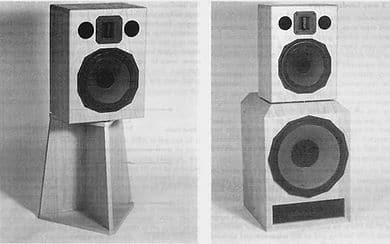
Sue ‘The Wise’ was working as a physiotherapist, at that time, and Andrews had the idea of working with her in the field, of all things, of feet, “I thought, ‘What about a joint practice of physiotherapy and chiropody?’ I had a pal who was a chiropodist and went around with him for a bit and thought that I could do that. I applied to schools of chiropody around the country and was offered several places. I chose Edinburgh to achieve the National Health Service qualifications. We chose Edinburgh because we both had a history there. My grandparents used to take me there to see relatives when I was a child and Sue grew up and went to school there.”
So Andrews moved to Edinburgh as a mature student of 23 with no grant and no accommodation. A room at a B&B and a badly paid part time job later, Andrews found a placement as a service engineer at a local hi-fi shop, working five in the evening until nine at night and all day Saturday. Ideal, as Andrews had been a hi-fi enthusiast since the age of 14, building his own system from kits and from scratch, using Mullard valves as the heart of the chain.
HI-FI CORNER
“I loved it! In fact, the owner of the shop (called Audio Aids…what a name) later asked me to come in as a partner. I decided to join full time. In the meantime, I did the first year of the chiropody course and passed the first year exams in case the hi-fi thing didn’t work out and I could go back, if needs be.”
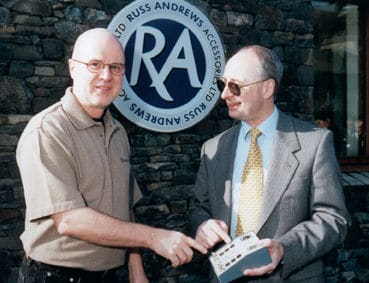
Meanwhile, Andrews needed to fund his marriage plans and so sold his hi-fi system plus TR3a sports car (“Quite a sacrifice, that.”) He did it too (“It might still work out, Monday was our 45th anniversary!”) While the personal partnership was going great guns, the business partnership didn’t work out. All was not lost, though. Andrews fell on his feet after a friendly customer decided to bankroll a new venture. Andrews loved mountaineering and climbed with the manager of an outdoors equipment shop. The owner of that very shop, Graham Tiso, got to know Andrews through Tiso’s problematic Akai cassette deck, “I repaired it on several occasions until, finally,” continued Andrews, “I sorted out the problems and fixed it. He was impressed with that. When he knew that the partnership was falling apart he said, ‘Why don’t you buy HiFi Corner? It’s for sale.’ I said, ‘I can’t afford that!’ He said, ‘That’s ok, I can deal with that.’ And he did.”
Andrews became part owner and MD of the High St. retailer, Hi-Fi Corner, an established business situated at the top of Leith Walk (it’s still there, in fact, and still trading today). Andrews set to work and changed the business to meet his own expectation and requirements but, “I did get bored: it wasn’t creative enough. You unlock the door at 9 o’clock in the morning, you stand behind the counter, customers come and you sell what someone else has made and you’d better not comment on it because you get bad comments back. I’d say things to manufacturers like ‘Could you make it, this way?’ or ‘Could you change that?’ They’d say, ‘No, just sell what we make. Go away, mind your own business.’”
I put it to Andrews that he must have been very annoying, “I hope so,” he replied, “I really hope so.”
To widen his personal and business interests, Andrews helped to build a recording studio in the basement of the shop with Fergie Meek, who had a contract with Edinburgh University to service their tape and audio gear while also being a source for recording and PA equipment for various activities. This tangential business investment was also useful during the Edinburgh Festival, as the business could rent out audio equipment.
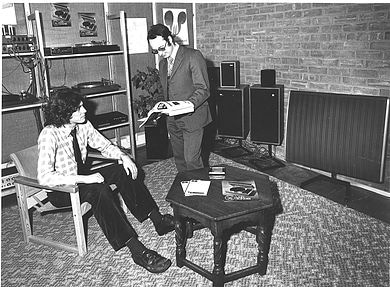
“I learned recording in those days, using Revox A77s plus a variety of good microphones in a variety of locations. I learned the sound of microphones and how to get the best out of them, even difficult things like harpsichords and pianos. I did recordings at St. Cecelia’s Hall, the harpsichord heart of Britain. This instrument is very complex because it’s plucked. You had to record the instrument with a minimum of the plucking noise because a microphone doesn’t distinguish between the two, not like the ear which filters out the plucking noise from the rest of the sound. The microphone had to balance the pluck with the string sound and the mechanical noises. It was a nightmare! The grand piano is a similar story. It has a huge frequency and dynamic range. Again, we had to balance the sound of the hammer hitting the string and the sound of the string. It was challenging. It turned out to be invaluable as an insight into recording itself.”
Andrews’ time behind the shop counter reduced accordingly, especially as he was also running the service department. Nevertheless, as time progressed, Andrews realised that shop sales were being hampered because the noise from the adjoining pavement and the road was proving an issue when trying to demonstrate equipment so, as the business grew, Andrews upped sticks and moved to another location and built a separate listening room.
“What I learnt between the two shops was this. In the first shop, if you played a system there, with other speakers and so on in the room it sounded much different than that same system without speakers and other equipment in the room. I realised that, particularly the speakers, sitting there in the shop, were responding to and degrading the sound of the demo system quite markedly. I thus came up with the idea of the ‘single-speaker listening room’. I was the first to do this.”
Soon after this revelation, he began to be visited by Linn’s Ivor Tiefenbrun.
Andrews sold his turntables, “In fact, I sold the turntable that became the Linn, before it was known as the Linn. I got to know him because he came back from Israel to rescue this turntable company that his father’s company, Linn Engineering, was making for someone else to sell. It was an Ariston. The guy doing it was a bit of a disaster. I was buying turntables from him and knew how good they were but he couldn’t supply. He went belly up and then Ivor came back to rescue that and set up his own manufacturing/selling business, Linn Products. Ivor came over to the shop to see me.”
“I’d been doing that for a couple of years by then.”
So didn’t Tiefenbrun give Andrews the credit for the concept? Didn’t Andrews consider this an ‘issue’? “Sort of. We did kind of clash a bit on one level but we’re still friends.”
Andrew certainly did clash with his retail business partner, “I was selling a few things that were really good. He wanted to sell more variety. What I was doing was too narrow for him and thought that it was going in the wrong direction. Business then got difficult with the 1973 oil crises and the whole industry changed. I ended up, with my staff, moving to a new shop called Russ Andrews Hi-Fidelity, in Northumberland Street.”
BYE BYE RETAIL
In his new location and business, Andrews had more freedom to perfect his own style and direction. Before he could really get to work, though, he suffered a bad car accident, suffering from a “smashed” shoulder. This eventually led to a parting of the ways as Andrews departed from his retail business. Why?
“I realised that I had become bored with retailing. There was a bit of friction at the time but we still see each other and we’re ok now. They carried on running the business and I was a shareholder but I didn’t interfere. It took me a while to recuperate. I had a new place, did a bit of retailing but then did more and more consultancy.”
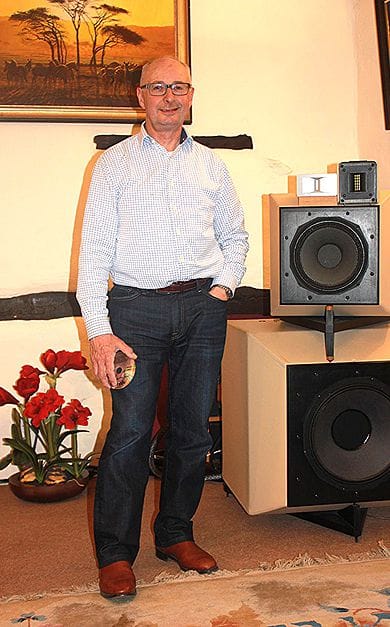
Things became very busy, very quickly. That included working with Nytech on R&D and liaising with dealers, Andrews then met Alistair Clark and formed ARC loudspeakers. Andrews did the design and Clark did the manufacturing then Andrews stepped in again to sell the things. Further consultancy was given to Meridian in terms of improving the products for the domestic environment.
“I worked with [Meridian’s] Bob Stuart on the search for musicality and generally helped to improve their products. So they would send me products, I would listen to them and propose improvements. I could work at the electronic level, you see. I spoke their language. To be in on the ground floor to improve a product was really interesting.”
Andrews’ continual changing working environment, his striving for new goals and need for variety and new challenges became a continuous process of learning and moving to the next stage.
“I thought, if I had learned all of this then I can do it better myself because I’m up against each manufacturer who has limitations on what they would do and I wanted to go much further.”
GO WEST!
It was during this time that Andrews moved to his current site, during 1980-81. He also travelled further afield, right across the Atlantic, in fact , setting up distribution of ARC and Nytech in the USA and hiring an American salesman. Both toured the USA for a year with a portable demonstration system consisting of a Linn LP12 turntable in a Halliburton, aluminium suitcase plus a Nytech amplifier and ARC speakers.
“The Americans were absolutely amazed. They knew all about Linn, as a distributor. They said, ‘You can’t move a Linn.’ I said ‘Why?’ They said, ‘Because, if you move it, you have to set it up all over again.’ I responded with, ‘Not if you set it up properly the first time.’ So I ended up doing workshops in dealer shops, sorting their Linns out for them. Having this LP12, it was opening doors in dealers because they knew about Linn but they didn’t know about Nytech and ARC. It was a useful introduction.”
Nevertheless, the American jaunt died a death. It was a disaster. The problem? The sound. It was…‘foreign’. This was most definitely a UK sound presentation full of musicality, rhythm and timing.
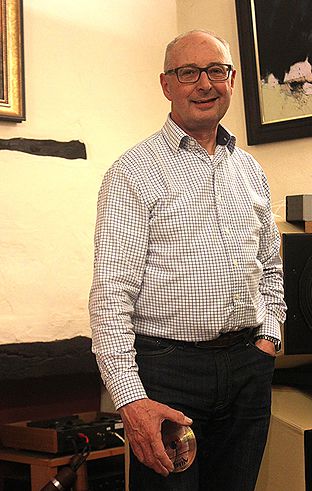
“It was the wrong time for them. They were used to big American speakers and Japanese amps. Also, the Nytech didn’t look like an amplifier, it looked like a desktop calculator. The USA is the graveyard of British companies. It cost a lot to do it but I was so glad that I did it. I learnt a lot. A lot of the lessons I learned came down to: why not to do something. Those sort of hard lessons.”
One of the lessons learnt was: do not enter the USA without a huge budget to make yourself known through the magazines. In that market, he also learnt that, “People expected to be told what to like by dealers and magazines. It was quite easy in the UK because myself and the kit were well known in the UK,” said Andrews. “I didn’t realise the impact of being unknown in the USA. Also, I thought that they spoke English. I know it’s a big country but I thought that they spoke English. But they don’t speak the same English. It was a traumatic learning curve.”
What Andrews is alluding to is the subtle differences in emphasis and the use of colloquial phrases which can twist and change the meaning of a sentence (see box later for more specific examples). Andrews found that, whenever he made a sales pitch, he could feel everything going wrong after a few sentences. The problem? He didn’t speak ‘American’.
“The same words mean something sufficiently different for the conversation to go, whoosh! And away. We didn’t understand each other. As a tourist, you never notice but as a business man, it’s critical. I wanted my salesman to teach me. I said, give me an example. He said ‘I can’t’ I said, ‘Why?’ and he said ‘Because you’re my boss.’”
And this was Andrews’ next revelation. For the salesman to teach Andrews, his boss, about the language would been an admittance that Andrews was in some way, inadequate. At that point, Andrews would be perceived to have ‘lost face’ and that, apparently, would never do. And you think that sort of thing only happened in Japan? Apparently not.
“It’s never talked about in America but it’s as important as it is in the Japanese culture. So I had to persuade him to teach me how to speak America. Eventually, we went in as a partnership. We stood, in a presentation, so we could face each other and I lead the presentation. He stepped in when he heard it going wrong. Gradually, I learned where the points were and started to get it right.”
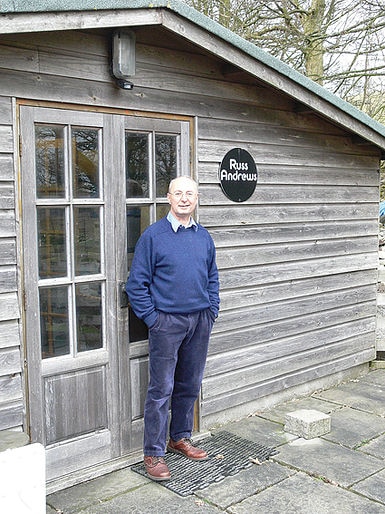
The pair initially visited a dealership in Washington DC dealership, Richard McGinnis. After a period of eight to 10 months, they circled back, “My colleague said to Richard, ‘I’m really proud of Russ, he now speaks American.”
He knows the difference between ‘Yep’ and ‘You bet’.’ Trouble was, it was a bit late by the time I put all of this together.” The lessons learned would be of later use when Andrews teamed up with Ray Kimber, later on.
TORLYTE
Once back in England, Andrews developed Torlyte. The product stemmed from irritations Andrews had when siting hi-fi equipment. His issue was that energy from hi-fi equipment was not being ‘dumped’. It wasn’t leaving the chain and entering the ground out of harm’s way.
It was, in fact, being stored in the high mass stands and getting back into the reproduction chain, adding distortion to the musical output.
“The mass of the stands and the mass of the cabinets was degrading the sound in an unacceptable way. I went through various things. I tried slate and realised that slate was moving energy in the wrong direction, it was too much mass. I tried slate because I had a wiring fault in a tonearm and I didn’t, at that time, realise that I actually had a fault. I added mass underneath the turntable and it seemed to make things sounds better. Actually, it really didn’t and it wasn’t until I’d worked out that I had a faulty arm that I realised that the mass was going in the wrong direction. The mass was compressing the dynamics and musicality. I wanted to open it out.”
Andrews met Tony Mulvaney, a woodworker and cabinet maker. The two used a ‘torsion box’ approach to supporting Hi-Fi kit. Essentially a light, hollow structure with cross ribs built inside to add strength, hence the name, Tor…Lyte. Andrews thought it the perfect material and structure to allow destructive energy to leave the hi-fi chain and head for the earth.
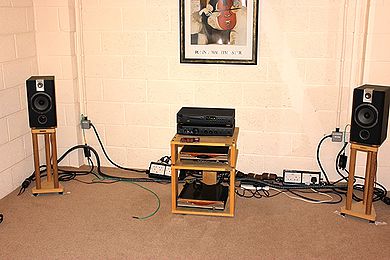
“I can’t remember how I met Tony. I knew that I wanted lightweight and wood. I worked through other materials. The lower the mass, the better the sound. Once Tony had the torsion box designed, we perfected that for hi-fi furniture. Same with our wooden Cone Feet and spikes. If you have components and stands with rubber feet on high mass stands then the energy can’t get out. It goes round and round in a loop, degrading the sound. With Cones and spikes, you hear a more open dynamic range because the energy has an exit point. It can be dumped, the energy is no longer being stored.”
The Torlyte product is one example of what Russ Andrews does on a day-to-day basis and how he helps to generates new lines to sell. He addresses problems that he can see in his own hi-fi set-up and wonders how they can be tackled.
“I knew that I wasn’t getting what I wanted. I kept hearing it compromised. I gradually found more areas that I could improve.”
Notice, though, that this crusade to improve sound quality extended to creating amps and speakers: his own system demonstrates his achievements in this area.
“We couldn’t compete in the area of hardware, we just weren’t known for it. We couldn’t sell enough hardware to make it a going concern. It was a cost rather than a benefit. I decided to concentrate on cable, accessories and other things. That’s where our reputation lies.”
SNAKE OIL?
Andrews says that he deals in ‘accessories’ and, if you peruse his catalogue then, on the face of it, that is the conclusion that you could draw. When you compare that catalogue with other retailers selling hi-fi accessories, there are differences. Apart from a range of his own products occupying that catalogue, Russ Andrews does tend to restrain the breadth of product to allow the stock to follow his own philosophy. One that is targeted to tackle various types of distortion or noise and one that tries to improve your current hi-fi set-up.
“It’s not just a bunch of stuff,” confirmed Andrews about his catalogue. “It’s a performance reason. There’s a reason that it’s all there.”
And what about those people who give his products short shrift? Those who look upon his designs with a certain lack of confidence or who blatantly accuse him of peddling ‘snake oil’?
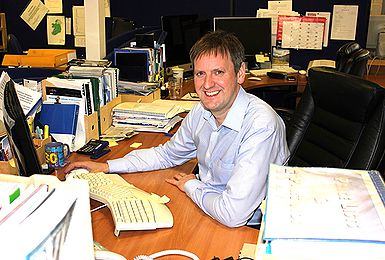
“I hear this sort of thing all of the time. I know that it’s not. This is why we do our 60 day guarantee. I have absolute confidence that what we sell does more than the job we claim. It does better than we claim. If you’ve read the customer responses… The guarantee we have says that you can send back any of our products for a full refund within 60 days. Why do I want someone to keep something that they don’t like? Why would they then buy something else from me? It’s not in my best interests or theirs, either. Returns are just around three per cent of our sales. I’d rather have someone try something and then send it back than not try it at all. Of course, everything doesn’t work for everybody. There’s all kinds of unknowns in any one system. Sometimes you can put something great in a system which makes the system sound worse. But only because that new component has shown up a fault. It’s actually revealed a problem that you couldn’t hear before. At that point, it’s easy to reject the thing that showed up the fault, it’s harder to then try to track down the item that’s causing the problem.”
As a company, Russ Andrews does appear to be a refreshingly open minded outfit. They are always on the look out for new product, often from third party inventors and designers.
“We will listen. I’m not the fount of all knowledge. I’ve got lots to learn. If someone can teach me something then I’ll say thank you.”
KIMBER
One of those was Kimber. Andrews was at a hi-fi show in Chicago supporting a Torlyte distributor and Kimber was in the room almost opposite.
“I was there demonstrating Torlyte and Ray [Kimber] was there with his cables. There weren’t many of them, then. We got talking. The more I learned, the more I was convinced I needed to hear this cable. I found that his cable was directional, just like every other cable but more directional than most because it was better. It was purer copper, seven strands of different diameter, teflon insulated and I brought samples home to listen. I thought, I’ve got to have this. We did the deal. The 4TC cable – a speaker cable – I tried as a mains cable. It was fantastic! So we made mains cables from it.”
Another problem-solving exercise completed, then.
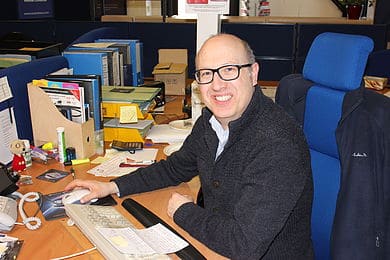
“Kimber were quite small and young when we started to do business. They’ve added products since then.”
As above, though, often with the help or instigation of Russ himself.
They didn’t initially have an interconnect. They had made a special cable to go into PSB speakers but I tested the cable and found that it made excellent analogue interconnects. This was the cable that became known as Kimber PBJ.”
THE MAINS THING
Cables were and are important to Andrews but, just as important, is the mains. It has proven to be a troublesome detail which too many hi-fi users tend to ignore. Back in the 70s, though, Andrews found it difficult to do just that.
“I was preparing Naim amplifiers and there was a demo going on in the room next door. After I’d repaired the amp, I was measuring the distortion and wondered why the distortion residual was modulated. It looked like music. Then it stopped. Then I realised that it stopped when the demo had stopped next door. Then it began again and the residual modulated distortion reappeared. This meant that anything else on the mains was coming into the amplifier off the mains and changing the output. That was a new thought. It was an ‘Oh shit!’ moment. I realised that there was no way that I could stop it but I could possibly clean it up. No wonder hi-fi show demos sound so bad.”
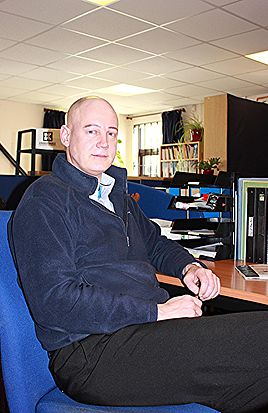
As a hi-fi reviewer, one of the dawning moments of my own career was acknowledging the source of the hi-fi chain. For many years, we have been told to give most attention and budget funding to the source in your hifi chain. That is either your CD player or turntable. Well, there is one step further back than that. Your real source is the electricity supply, your mains. The mains isn’t ‘audiophile’ though. It’s not clean and it’s certainly not free from noise.
“Everything that everyone is doing is coming from the power supply. Same with your house. Crap comes off the mains and affects the output of your system. That takes a lot of thinking about. How can we deal with this? That’s when I realised that the mains was so important. I also realised that, at certain times of the day, a given system would sound better than at other time during the day. Some people said, ‘Oh it’s just the way you feel.’ But now I could measure it, there was different amounts of pollution coming off the mains at different parts of the day.”
Andrews has done a lot of work to ‘remove that crap’ without degrading the signal.
“That’s why I’ve produced parallel filtering, not filtering in series. Series filtering is bad because you end up with inductors in series that increases the dynamic impedance of the mains which increases the leverage of the pollutants. They have something to work with. The lower the impedance, the lower the leverage. Parallel filtering deals with pollutant frequencies outside of the signal which results in cleaner signals. We have two types of parallel filtering: Silencer and a more expensive version of that, Purifier (which takes Silencer technology and then adds to that).”
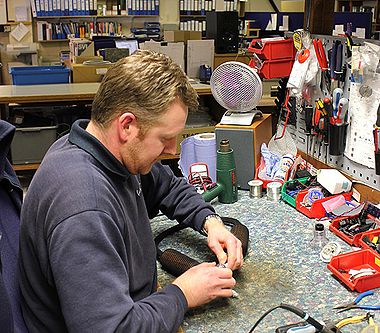
I hope that I’m speaking without hubris or any element of presumption when I say that I believe that I ‘understand’ Russ Andrews. The man is a bundle of energy. His aim in life is to learn and, because of that, I guess that he’s a man who can be diverted at a moment’s notice. He both hates and loves problems. ‘Hates’ because they act as obstacles to the aim of the perfect sound, ‘loves’ because they give him a chance to solve a puzzle and, during that task, he might just glean a new strand of knowledge which would please him no-end. He casts his intellectual net wide. He wants to do everything, experience everything, be everywhere and learn everything he can in those subjects that fascinate him. The only real enemy that Russ Andrews has is time. The fact that it might eventually defeat him in his task is, I suspect, galling to him. I also suspect that, in the meantime, he will enjoy the journey. The splinters from Russ Andrews’ life-long quest for aural knowledge is the stream of sonic benefits in the shape of products that he helps to bring to market.
“I’m constantly trying to find answers to problems,” said Andrews, “That’s what I do all day apart from making things and selling them. Right back I’ve had a sound in my head of real music. I want that sound out of my hi-fi system.”
CONTACT:
www.russandrews.com
Tel: 01539 797300
THE PRINCIPALS
Russ Andrews, the company, is infused with the philosophy of the man himself but the personality of the company is more than that. In fact, it wouldn’t be quite the same without the following individuals:
JOHN ARMER (MD)
Armer has been the MD of Russ Andrews for three and half years and, I have to say, is one of the nicest people I’ve met in the industry. He exudes a quiet efficiency yet retains a boyish enthusiasm and innocent wonder about hi-fi that is so refreshing when compared to the more common cynicism that often abounds. A natural MD, he does his job without fuss, ceremony or ego.
“I oversee everything: marketing, sales, I have overall responsibility for accounts, manufacturing and despatch. I joined in 1999 and started in sales. I know the company and understand the ethos.”
Which is?
“We can start with anyone and any level of system from a portable hi-fi, stereo ghetto blaster or top-end system and make it sound better. I talk to people on the phones —because I still speak to customers, an important part of my job—and people will tell me how our products or advice have improved their system which is so rewarding. Because of the breadth of products that we sell, I believe that we have a good overview.”
Is it an issue that the company is away from the traditional business hub of London and the South? As beautiful as this place is…?
“It’s a wonderful commute to work, it sets you in the right frame of mind for the morning!” And the serious reason? “We’re a mail order company and we ship all over the world so the location is less important than if we were a High St. store,” said Armer. “We present a complete infrastructural approach. You have a hi-fi system and we provide products that allow you to get the best from it whether that be a mains product or signal cabling, we give advice on how to improve your room for sound.”
PETE BEVIR (Head of sales and new product development)
A rather shy yet obviously capable man, Bevir is happier tackling business affairs rather than talking to interfering journalists while his demeanour is always one of optimism.
“I source new products for Russ Andrews and develop existing ranges, bringing them all to market and looking for new opportunities. It’s quite exciting because I can take an idea or concept and take it through the design stage into the catalogue,” said Bevir.
He keeps a wary eye on the competition while also looking for ways to enhance and tweak the company’s current range of products as well as liaising with third party outfits who are willing to offer their own products for eventual sale.
“We have customers that come to us with ideas or have developed their own products. New material for equipment supports, for example,” said Bevir. “We decide whether to listen to the new ideas or not, decide whether it’s viable, ask if it fits in with our company ethos and Russ’s beliefs.”
Externally located designers such as Ben Duncan (RF filters) and Paul Houlden (balanced mains units) are just two examples of this open minded system although, added Bevir, “We’re not a basic distributor. For us, it’s most important that it’s a Russ Andrews product, not just a third party product. We have to be sure, too, that it’s making an improvement and not just changing the sound.”
SIMON DALTON (Sales, marketing and social media)
Talking to Dalton never fails to bring a smile to the lips. He seems to stem from a different age. It’s as if he’s just emerged from a dimension door marked ‘The 50s’. I say this with the greatest respect, of course and only to paint a picture. Dalton has an old fashioned sense of duty, work ethic and, well, honour, I guess. There’s something eminently trust-worthy about Simon Dalton.
“I not only keep people up-to-date with Russ Andrews products but also make people aware of other stories that will be of interest to the general music fan,” said Dalton. “The thing about working within social media, as opposed to the standard catalogues, is that you can get more of your personality across. Otherwise, things can look a bit sterile.”
Russ Andrews is one of the few companies—possibly the only company—that reviews reviews. They will actively comment on a review received in a magazine. It’s novel and rather gratifying to see a company stand up for itself in this way instead of allowing the media to have things all its own way, “A lot of that comes from Russ,” said Dalton. “Maybe people see the company as a person. Hence, for example, if there’s any hassle regarding cables, we often get it because we don’t appear to be a faceless company. It’s ‘Russ Andrews’. So, despite Russ being forthright, he’s had to be thick skinned. If he thinks that something is not right, he’ll say so.”
Dalton is impressed with customer feedback, though. “I’ve never worked for a company where you get so many people ringing back once they’ve bought a product. Because we do this 60 day trial thing, we get people who are healthily skeptical but they will try things out. They’ve got nothing to lose. But when it works and is far beyond what they were expecting, they ring us to tell us. We get that all the time and it makes it all worthwhile.”
ZAC WILSON (Senior product technician)
A man surrounded by an impressively tool ornamented desk that would make any hobbyist feel weak at the knees, Wilson is focused and dedicated and clearly loves the variety that Russ Andrews’ broad catalogue of technologies, brings to his daily job. In fact, when I cruelly interrupted his work, he was just adding the finishing touches to a power cord, the Super Kord Silver SDII, all £5,500 worth. Kimber cable such as this is either shipped in complete or assembled on the Russ Andrews’ shop floor.
“My duties revolve around manufacturing, what we make in-house, 80% of our products including cables, Sky box and speaker upgrades. We have quite a varied range. At the minute we’re still trying to catch up with our Winter sale which finished on 4 February!” said Wilson.
THE RUSS ANDREWS’ GUIDE TO SPEAKING AMERICAN
The following includes several of Russ Andrews’ own lessons in how the English language (or languages, to be more accurate) differs significantly between the UK and America. You will see how a UK businessman could find subtle, yet important problems arising during a presentation, meeting or one-to-one conversation. The following is a list of words or sayings and how they differ between the two cultures.

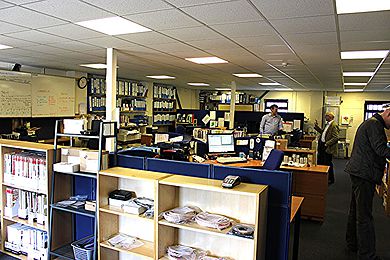
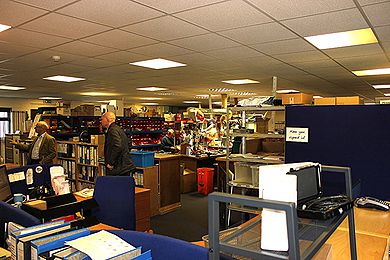
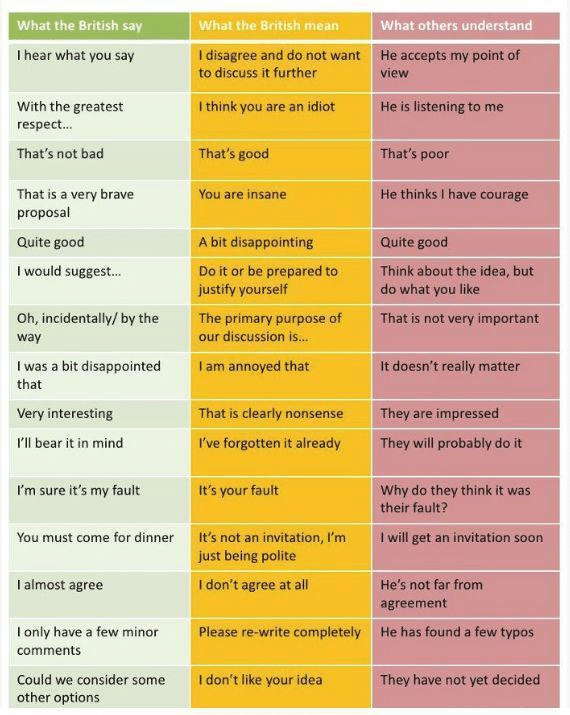
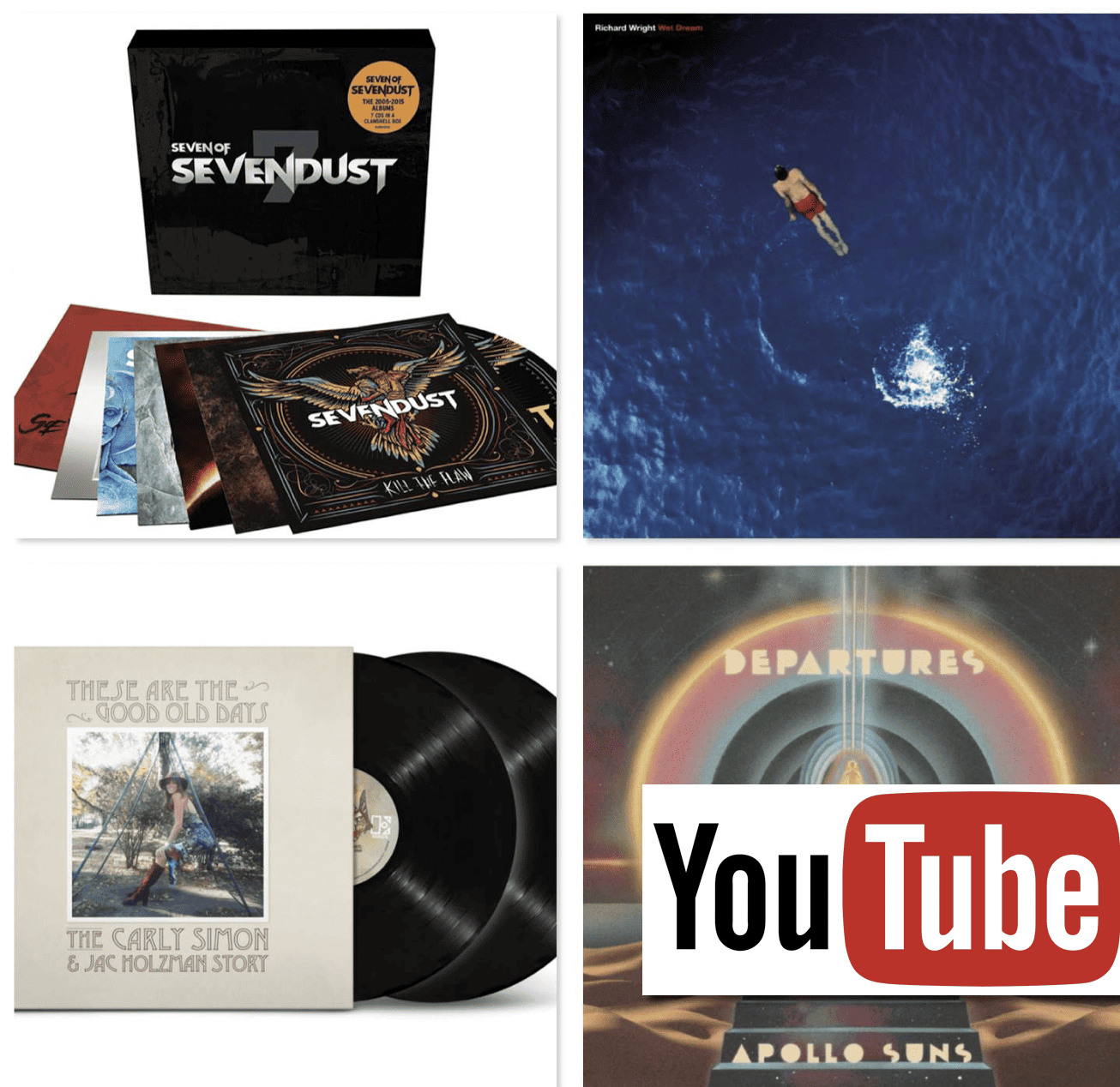
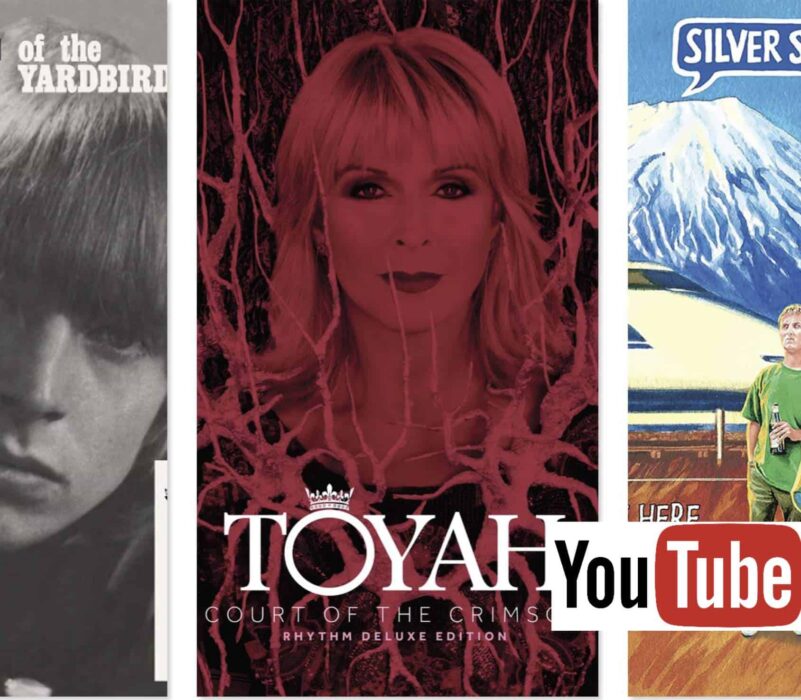
A fascinating insight, Paul. And I mean that by the way so no need to translate what I really mean!
Hehe, thanks John.
Loved reading that article. Many thanks!
My pleasure, David.
I first met Russ when I was 16 in the mid sixties. He kept me on the straight and narrow with good advice which has helped me over the Hi-Fi years. Great guy – quiet but thoughtful and committed. I raise my hat to him; to Dave Watson and Roy McCulloch. Great guys all. Oliver
Fascinting article Paul, both well written and informative. Thanks.
Thanks John!